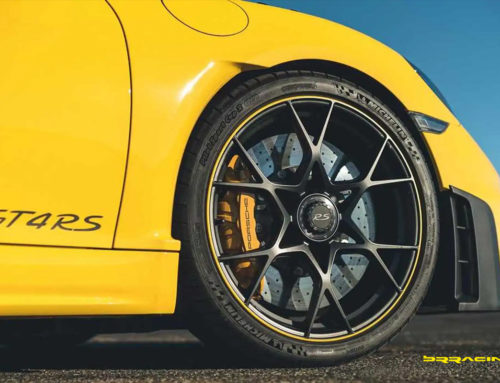If you don’t know what the IMS bearing is….then read on for sure, and check out all the write ups on the forums about the Intermediate Shaft Bearing (IMS) as well. While many posts and articles have been written about the IMS, we wanted to make sure we also share this info with all of our customer and reader base. This is one of those items, like the rubber timing belts on Audi motors, or the poor cooling system on BMW motors, that if not understood, could result in the complete destruction of the motor.
We just did this upgrade and replacement on a customers Porsche Boxster, 1999, and can attest to the issue and the need for the upgrade.
Most of the technical information in this write up is from LN Engineering, who developed the upgrade kit.
Pictured below is the failed IMS and the damage it did, and left alone, the whole motor would soon go with it.
What can be done to prevent an IMS failure?
There is no quick, cheap or easy fix. Like with many aircooled engines, many get torn down and rebuild BEFORE an engine failure so that engines can get upgraded. Short of a pre-emptive rebuild, the best preventative measures that can be taken are to be religious with your maintenance schedule. But keep reading, there’s more that you can do.
What can be done is to change your oil more often. We recommend oil changes for the M96 and later engines (as we do for air-cooled engines) every 5,000 miles or 6 months. If you drive short distances frequently or in cold climates, more frequent changes every 3,000 miles or 3 months is advisable. We’re not just saying this to drive up the oil change business, as you will read below, the lubrication or lack of it to the IMS will accelerate the deterioration of the IMS bearing.
If you track your car, you should change the oil after every race weekend or every other event at the bare minimum and should also consider used oil analysis to monitor the health of your engine.
Use a higher viscosity motor oil. There are several Porsche approved oils that are 5w40, rather than Mobil 1 0w40. We also use and recommend Motul 8100 5w40, which is an excellent Porsche approved lubricant for both street and track use.
By no means should you use any oil thinner than a 0w40 – do not use 0w30, 5w30, or 10w30 viscosities! Also, use of a low SAPS oil (has less Zn and P) isn’t recommended.
Timken Falex bearing tests tend to indicate increased load capacity and less wear scarring with oils with high levels of moly as documented here and may prolong the IMS bearing life.
Also, make sure you drive your Porsche as it was intended to be driven! We like to see the revs kept above 2,500 rpm – higher rpms provide better protection than lower rpms for the IMS bearing (more on why this is so further down this page). Just make sure you’re engine’s warmed up first before putting a large load or high rpms on it! There are also other side benefits of driving your Porsche the way it was meant to be driven…..the clogged air passages, the air/oil separator, the RMS.
On a new or remanufactured engine built in or after MY06 utilizing the revised M97 IMS, the only “preventative” measure that can be taken short of our retrofit kits is to remove the seal off the front of the IMS bearing, to allow for engine oil to lubricate the bearing. Alternatively, you can repack the bearing with a quality synthetic bearing grease and put a new seal (available from any place that sells bearings). This same technique could be applied also to MY97-05 bearings, if found to be in excellent condition, but by this point, the majority of the labor that is required to do an IMS retrofit would have already been spent, so it’s a better value to replace rather than solely inspect and reseal the IMS flange.
With proper lubrication, more frequent oil changes, and spirited driving, longevity of your original IMS can be greatly extended. The LN Engineering retrofit kits use ceramic bearings with significantly longer service life and come with seals removed for improved oiling as well.
Why do intermediate shafts fail (or rather, why do the bearings fail)?
Thanks to a fellow Porsche Boxster owner who is also a retired bearing engineer who worked for Timken Bearing, we have gained much insight towards the root causes of intermediate shaft failures. Here’s the reader’s digest version of his bearing analysis and how LN Engineering has used this information in developing its IMS solutions. By their estimates, they figure a 90% survival rate of the bearing used in the IMS at 90,000 miles* – resulting in a staggering 10% failure rate (called the Ll0 life)! *Assuming an average speed of 60mph in top gear.
There are two configurations of intermediate shafts – the major variations are in the drive, where the early have a bicycle chain style sprocket where the later is a gear type sprocket. The other differences are in the intermediate shaft bearing configurations, with three bearing configurations – an early dual row, single row, then final version, with the larger single row bearing.
Both intermediate shaft assemblies use a bearing support visible as a small stud from the exterior of the engine in the center of the IMS hub flange. This stud has a flange that centers and rests on the inboard side of the bearing and torques the inner race to the stationary IMS hub flange. The outer race is allowed to rotate which allows the IMS to rotate. A few problems stem from the support stud which is undercut for an o-ring to keep oil from leaking out of the IMS hub flange. This severely weakens the stud as it is undercut deeper than the threads by a good margin. The main problem stems from the use of a sealed bearing. Although the seals are intended to keep oil out of the IMS tube and keep the permanent lubricant in the bearing, neither happens.
On engines observant of factory recommended long drain intervals, oil heavily laden from fuel or just dirty from too long of drain intervals provides poor lubrication for the IMS bearing. Even .002% water in the oil can reduce bearing life by up to 48%. Higher moisture levels up to 6% can reduce bearing life by up to 83%. Excessive oil temperatures also have a negative effect on bearing life – the life of the permanent lubricant used in these bearings is cut in half by every 18F increase in temperature – from an uncontaminated life of up to 30 years at 86F to a useful life of only 90 days at 212F! This is why the bearing engineer recommended removing the seal and allowing the engine oil to lubricate the bearing, and why frequent changes are so important. Oils high in ZDDP and moly further improve longevity as suggested in the article referenced above. More info about ball bearings can be found here.
Now it gets more technical…. Where the exact reason for IMS failures cannot be known for sure, in the bearing analysis it was noted that bearings used in the IMS position are unusual in that they are double sealed and have outer race rotation. Bearings were found to be void of grease and had light oil in them and wear patterns in the ball grooves indicate marginal lubrication due to the relatively low viscosity of motor oil compared to grease.
In addition, conventional class 1 bearings, like the 52100-series bearing steel used in the factory bearings, is typically only stable to 250F, suffering from fatigue and weakening exposed to elevated engine temperatures that slowly affect the bearing’s strength over its lifespan. Attempting to reduce engine coolant operating temperatures directly reduces oil temperatures, further improving bearing life! That’s why trying to lower the coolant AND oil temperature is so important!
Computer simulation of the 6204 bearing showed that only three balls are under load at any given time. Hertz stress is moderate. Lube film thickness is very small. Ideally it should be greater than the worst surface finish. Speed is not high enough to develop an elastohydrodynamic film to overcome surface finish/film issue. Fatigue life is high due to relative light load but with no EHD film there will be metal/metal contact and wear. With only three balls under load at any one time the unloaded balls will be dragged around by the ball separator. When a ball leaves the loaded zone it will tend to be driven into the separator pocket.
The engineer’s initial thoughts were that the ball-separator failure led to bearing collapse, but after analysis of said IMS bearings, it would appear that bearing wear/fatigue spalls lead to separator wear and outer race failure. Separator failure and bearing collapse causes catastrophic failure of the mounting bolt(s) and IMS/timing chain components. The first recommendation was to use a bearing without seals and secondly to use a higher viscosity oil (with greater film strength). More frequent changes will also improve lubrication quality. An oil with extreme pressure additives like Moly might also further assist in increasing bearing life. Higher rpms also increases bearing life as this lessens the viscosity requirements of the lubricant to maintain EHD lubrication, also providing a reasonable explanation of the lack of IMS failures in tracked cars or those driven “like they were stolen.” Likewise, far more failures are found in engines with low mileage that are garage queens and never driven to their full potential. Further recommendations by the retired Timken engineer are evident in the design of LN Engineering’s IMS upgrade and retrofit kits.
How is the IMS Bearing lubricated?
As supplied, the original IMS bearing employed a sealed bearing and relied on a permanent lubricant (grease) to lubricate the bearing. (Similar to the sealed bearing that fails in the gearboxes found in MY97-08 5 and 6 speed manual).
The problem with a sealed bearing with a permanent lubricant is that during the life of the bearing, the seal is subjected to oil temperatures near the maximum rating for the seal, eventually degrading the seal. At this point, the seal fails to retain the permanent grease, which is washed out by the engine oil. When this happens, the little amount of oil in the bearing is not sufficient to lubricate AND cool the bearing, leading to accelerated wear.
Several solutions have been suggested from more frequent replacement of the bearing and or seal and a lubrication schedule to replenish the permanent grease.
With the LN Engineering IMS Retrofit and IMS Upgrade, they chose to use a ceramic hybrid bearing which requires less lubrication and is designed specifically for poor lubrication environments. Coupled with the lack of grease seals, the new bearing is lubricated by splash as well as submersion lubrication (depending on operating conditions). With its longer service life under these conditions, the ceramic bearing is intended to provide extended service above and beyond the original IMS bearing.
Here is the motor and the IMS before removal. The outer cover will be removed to expose the inner bearing for the Intermediate shaft.
For this motor, this is a double row version of the bearing (which is what was used on the early motors), and special tools are required to retrieve the inner bearing and break / destroy (yes, DESTROY) the inner bearing race retainer.
Here is the first part of the tools installed to break the inner race.
The complete tool assembly in place, the force can then be applied to the bearing to extract it and break the race retainer and not damage any of the inner motor surfaces.
The bearing is now completely removed.
The bearing on the left is the original IMS, and the little thin spring retainer is what had to be broken to retrieve the bearing. The new upgraded single row bearing on the right is not as thick, and requires a traditional circlip to be installed to retain the bearing in the proper location.
Besides the upgraded bearing, the main bolt shaft is significantly upgraded, and you can see how this bearing has no outer or inner seal to keep the motor oil from lubricating it.
In addition, since the bearing and shaft changed, LN Engineering also upgraded and changed the main cover seal to further prevent leakage. Here you can see the new cover completely installed and ready for use.
Don’t wait till its too late……if you have an older generation water cooled motor, regardless of mileage, you are a candidate for the IMS upgrade.
BRracing – your complete Porsche service and maintenance expert.














Besides the upgraded bearing, the main bolt shaft is significantly upgraded, and you can see how this bearing has no outer or inner seal to keep the motor oil from lubricating it.
Hello
I have a Boxster S 2006 and pondering about finding the money for the IMS upgrade. Can you help me with my decision please with respect to failure risks?
Many Thanks
Rob Davies
When someone writes an post he/she retains the idea of a
user in his/her mind that how a user can understand it.
So that’s why this piece of writing is amazing. Thanks!
I read this article completely about the difference of newest and previous technologies,
it’s remarkable article.
Cool post . Cheers for, visiting this www page dude! I shall message you some time. I did not know that!
The points you have written here are very valid and I agree with much of this data. This is a very good article. Thank you.
I am very impressed with your article. This is great information with engaging and useful content. I share in many of your thoughts and I am still considering some other aspects of your article
Hello There. I found your www using msn.
This is a very well written article. I will make sure to bookmark it
and return to read more of your useful info. Thanks for the post.
I will definitely return.
Wonderful, what a website it is! This wewww gives useful information to us, keep it up.
We appreciate you sharing fantastic informations.
Your website is extremely cool. I
Nice post. I used to be checking continuously this wewww and I’m impressed!
Extremely useful information specially the closing phase
:) I deal with such information a lot. I was looking for this particular info for a very long time.
Thank you and good luck.
In order to offer all these features, bearings use a fairly basic framework: a
round with internal and also external smooth steel surfaces, to help in rolling.
The sphere itself brings the weight of the lots– the force of the tons’s weight is what
drives the bearing’s rotation. However, not all loads placed force on a bearing in the
same manner. There are 2 different sort of packing
Good writeup, but I disagree on one of your statements:
“due to the relatively low viscosity of motor oil compared to grease.”
Grease is merely oil suspended in a thickening agent. This thickening agent does nothing to provide lubrication…it only holds the oil in place.
Why not use an open roller bearing instead of a ballrace much better load capacity.
also when all is bolted up how does the splash oil get in and out of the bearing as both sides appear to be blanked off ?
We have been using the LN Engr solution for several years.
We are not a research lab, but tend to test the new solutions, and then look at the proven results.
The LN Engr solution has been in the market for years, and has a strong base of proven customers.
They also fundamentally understand the issue. Since the IMS bearing is at the lowest point in the flat sump, there is plenty of oil being sloshed against it. Even under high loads.
Thanks for responding.
Thank you for your article. I found this useful.
—
Hunt Bearings LTD,Ball Bearing Suppliers
http://huntbearings.com/products/bearings/
Right here is the perfect www for anyone who would like to find out about this topic.
You know a whole lot its almost hard to argue with you
(not that I really will need to…HaHa). You definitely put a fresh
spin on a topic that has been discussed for a long time. Wonderful stuff,
just great!